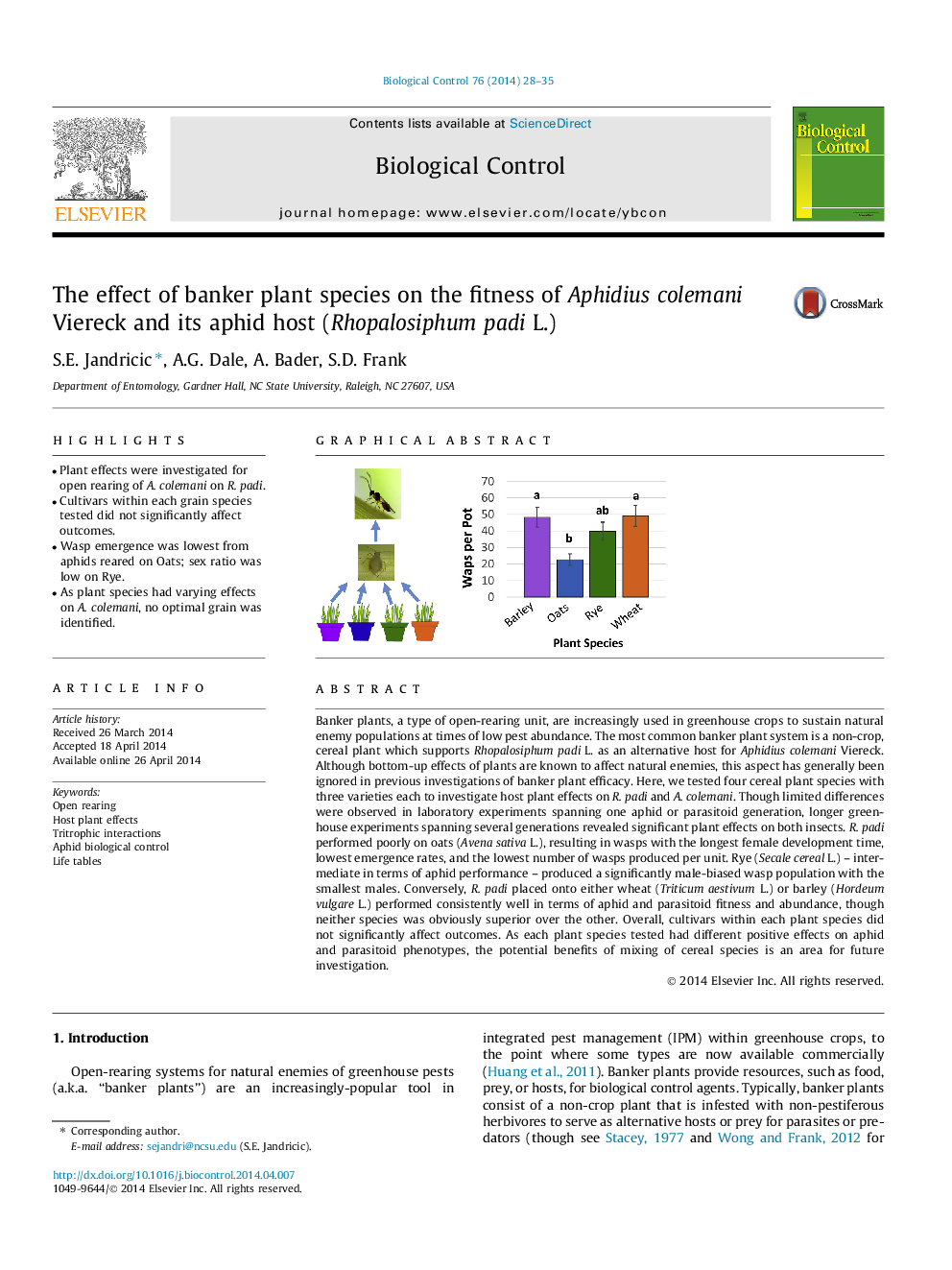| Article ID | Journal | Published Year | Pages | File Type |
|---|---|---|---|---|
| 4503880 | Biological Control | 2014 | 8 Pages |
•Plant effects were investigated for open rearing of A. colemani on R. padi.•Cultivars within each grain species tested did not significantly affect outcomes.•Wasp emergence was lowest from aphids reared on Oats; sex ratio was low on Rye.•As plant species had varying effects on A. colemani, no optimal grain was identified.
Banker plants, a type of open-rearing unit, are increasingly used in greenhouse crops to sustain natural enemy populations at times of low pest abundance. The most common banker plant system is a non-crop, cereal plant which supports Rhopalosiphum padi L. as an alternative host for Aphidius colemani Viereck. Although bottom-up effects of plants are known to affect natural enemies, this aspect has generally been ignored in previous investigations of banker plant efficacy. Here, we tested four cereal plant species with three varieties each to investigate host plant effects on R. padi and A. colemani. Though limited differences were observed in laboratory experiments spanning one aphid or parasitoid generation, longer greenhouse experiments spanning several generations revealed significant plant effects on both insects. R.padi performed poorly on oats (Avena sativa L.), resulting in wasps with the longest female development time, lowest emergence rates, and the lowest number of wasps produced per unit. Rye (Secale cereal L.) – intermediate in terms of aphid performance – produced a significantly male-biased wasp population with the smallest males. Conversely, R. padi placed onto either wheat (Triticum aestivum L.) or barley (Hordeum vulgare L.) performed consistently well in terms of aphid and parasitoid fitness and abundance, though neither species was obviously superior over the other. Overall, cultivars within each plant species did not significantly affect outcomes. As each plant species tested had different positive effects on aphid and parasitoid phenotypes, the potential benefits of mixing of cereal species is an area for future investigation.
Graphical abstractFigure optionsDownload full-size imageDownload as PowerPoint slide
